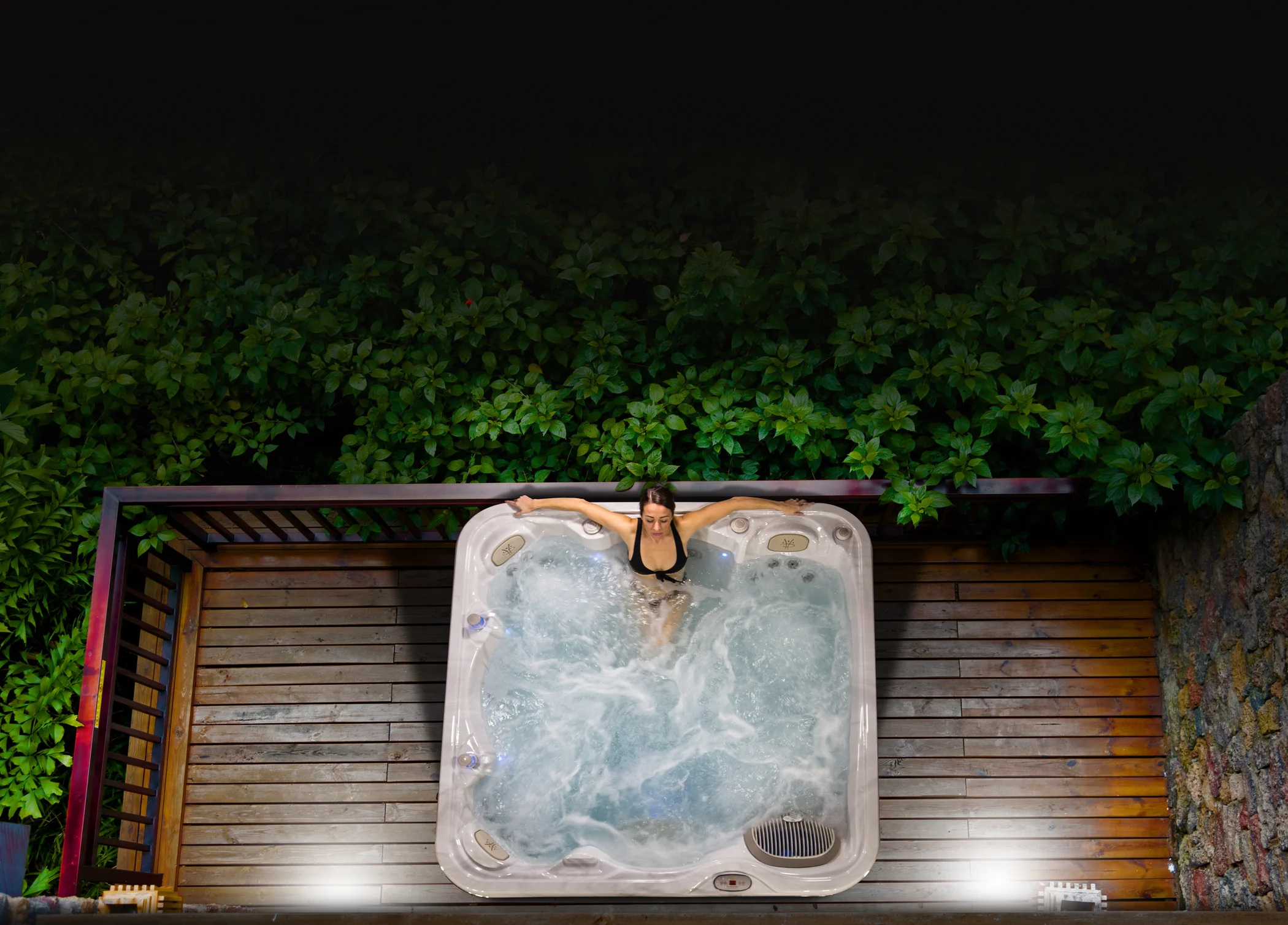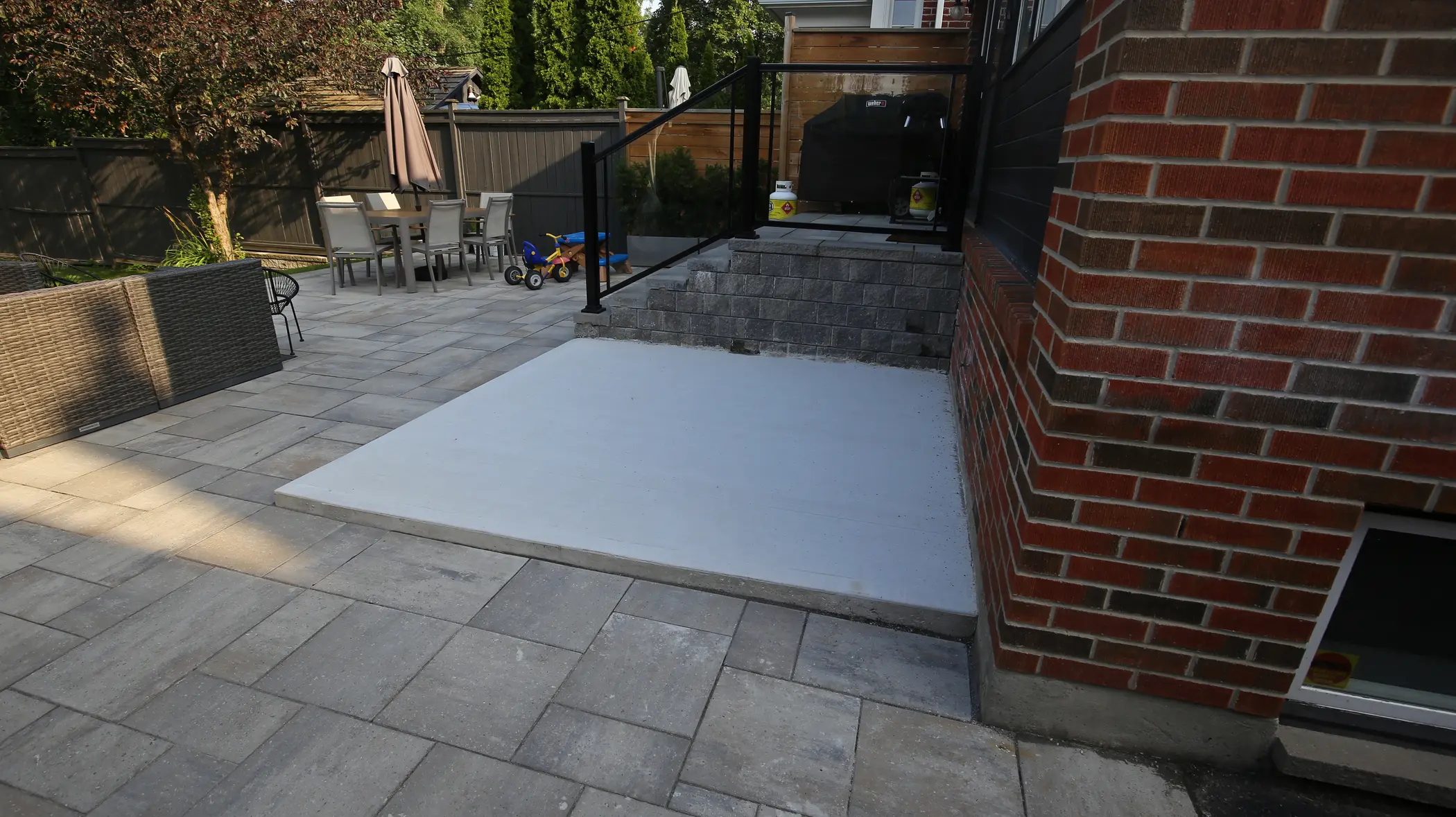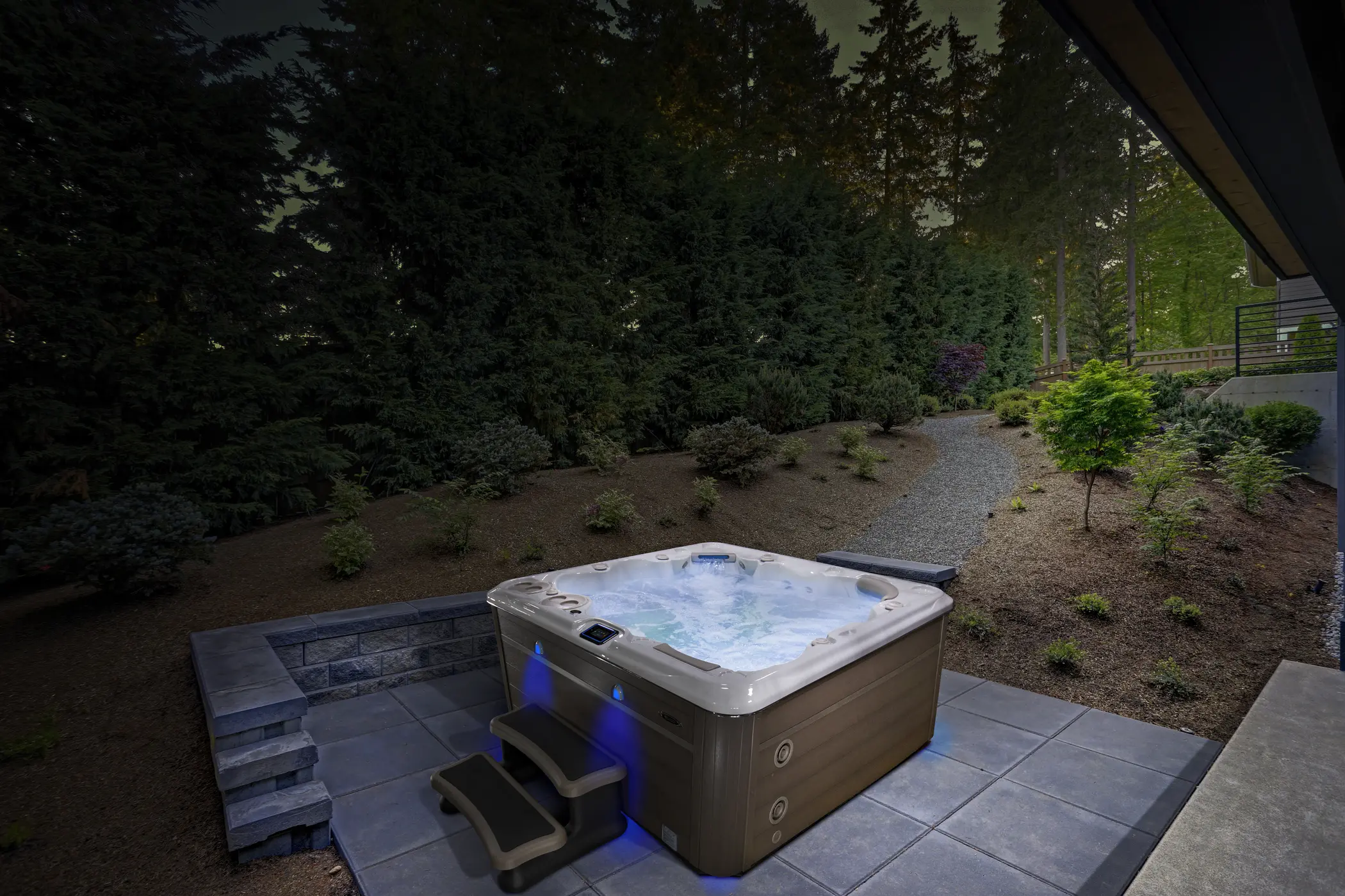What is the Best Surface for My Hot Tub? (Comparing Concrete, EZ Pad, Wood, and Pavers)

If you’re buying a hot tub, it must sit somewhere. But where? On a concrete pad, on pavers? Can it go on your deck?
These are all common questions that need to be addressed by any customer. They are all a normal part of the process when considering a hot tub. We see all kinds: Some customers want to understand everything, others just want you to “take care of it,” while most are in-between. But all customers are aware that installing a hot tub takes a little bit of work. At Hydropool, we deal with these kinds of questions on a regular basis, and we know that what people generally want is a hot tub that doesn’t just work on Day 1, but that holds up over time.
Each manufacturer recommends a different approach based on how their product is constructed. So we highly recommend you have a look at the installation guide of the specific model you’re buying before you commit to buying any hot tub.
The good news is, in most cases, a base for your hot tub can be found, if it doesn’t exist already. You generally have options on how you want that done. In this article, we’re going to go through the choices you face when choosing a base for your hot tub, and suggest what you could do, with the pros and cons of each decision explained.
Why Strong, Flat Surfaces for Your Hot Tub are Necessary
“What does my hot tub need to sit on?” is a common query, but it has the easiest answer: You need a strong, flat surface.
Here’s why: Hot tubs hold a lot of water, right? And water is heavy. A cup of water weighs half a pound, and a gallon weighs 8.3 pounds (for the Americans), and a litre weighs a kilogram (for everyone else). Those people who deliver big jugs of water to office water coolers all day? They have earned their muscles. Water is heavy because it is so dense – ice floats on water because it becomes less dense when frozen, even though it is basically the same thing. We could spend a lot of time geeking out about the nature of water properties here, but the main thing to realize is that water weighs a considerable amount.
If a four-person hot tub holds around 300 gallons, and a gallon weighs 8.3 pounds, you’re looking at nearly 2500 pounds with the water alone. Add up to another thousand pounds for the hot tub itself and whatever weight you’re jumping in with and your hot tub case and what’s underneath it is doing a fair amount of work.
In metric, that’s 1,250 litres of water alone, which equals the same in kilograms. That’s the same weight as a narwal or multiple rhino species or the equivalent of eight black bears. Put it this way: The average car is about 1500 kilograms. You have a driveway under your car for the same reason you will want to have something flat under your hot tub. Something has to take the weight.
Most of that hot tub weight is pushing straight down, due to gravity, of course. And if there’s a spot that isn’t flat, that’s weaker than the rest, what do you think is going to happen? All the pressure is going to get to it over time, and you’re going to end up with a bulge, leak or other issue with your tub. If the surface isn’t completely flat, your frame won’t be sitting square and again, over time, it can shift or warp.
If you’ve ever seen a carpenter check and check again if something is level and square, this is why. Everything just comes together better when it is level and square and hot tubs are no exception.
Can a Hot Tub Sit Directly on the Ground?
The problem with the answer, “you need a strong, flat surface” is that it just leads to a second question: What kind of strong, level surface will do?
This is one spot where inflatable-style hot tubs have an advantage. Because their structure isn’t as solid, you can put an inflatable directly on the ground and it will be able to handle the ground’s imperfections. It might not be entirely comfortable, but you can install an inflatable hot tub directly on a tamped gravel bed. And even that is not really recommended, because you’re going to be able to feel that gravel on the bottom of the tub.
You can do a lot of things, but should you? We would say putting any hot tub directly on the ground without prep would fall into that category of thinking: We say you should not.
So let’s have a look at the main options available to you: concrete pads, pre-made pads, decks and pavers.

A concrete base is the strongest and most secure base for a hot tub, but it’s not the only one.
Do I Need a Concrete Base for My Hot Tub?
When it comes to the tubs that most people buy – acrylic and roto mold tubs – a more planned surface is needed.
It has been the industry standard for years and it still is the best method of supporting your tub: A concrete pad is best because it is the flattest and the strongest. It costs at least $1500-$2000 in all, because unless you’re fairly handy it also involves hiring a contractor. Even if you are handy, it requires buying and pouring cement, then making sure it is nicely level when it hardens, which is done by screeding. If you know what screeding is, you’re nodding here, but if you don’t, trying it out for your hot tub purchase to see if you’re naturally good at it isn’t our suggestion. In some areas, you may also need permits to have a concrete pad poured since it is permanent – you or your hot tub dealer would need to check to be sure in advance.
So it’s best. But a concrete pad is a bit of work and a bit of cost. Is it a surprise then that people have tried to create other solutions? They are out there as well.
Will a Pre-made Spa Pad Work (like EZ Pad) for a Hot Tub?
Pre-made spa pads are at the other end of the market than concrete. A relative newcomer to the market, they are often sold on the basis that they are easy to install and relatively inexpensive. They have names like EZ Pad or Handi Pad and can be bought through places like eBay or Amazon, usually around $600 U.S.
Do they work? In our experience, we have seen them function well – but only if the ground underneath them is prepared properly. This is key to whatever type of installation you make: At some point, there must be a solid, flat surface created.
If using a pad, the area underground must be compacted so that it will not shift. Ideally it would consist of sand or gravel. This is because sand or gravel compact well, and because they drain water through them – the last thing you want is your hot tub to end up in a pool of water every time it rains, because it has sunk itself into the soft ground. That would mean you’d be digging down about six inches, backfilling with sand or gravel and then tamping it down so that it is solid, then putting your pad on top.
Even then, of all the options, it remains one of our least favorites, because so much depends on the quality of that flat ground surface you’ve made. You can do it though, and it can work. But for just a little more work, you will have a surface that will work much better.

Paving stones can make a beautiful, simple base for a hot tub. The model shown here is from Hydropool’s Signature collection.
Can Decks or Paving Stones Work as a Base for a Hot Tub?
We have the same approach when considering using decks or using concrete pavers as a base as we do with a pre-made spa pad. Each can support hot tubs, because they are capable of being flat and level. It’s the question of strength that matters.
The deck you’re placing the tub on must be strongly supported where the tub will actually be sitting – it can’t go on that part of the deck that’s overhanging at the edge, for example, at least not without more help being added. Added posts or beams may be needed because the base of the deck must be strong enough to support the tub. Ideally, you’d be able to see the base of your deck before you decide to put a hot tub on it, so you could be certain it could take the weight. With decks, permits are often required, especially if the deck is raised, so you would need to check what the local regulations are in your area before going ahead this way.
Concrete pavers can certainly work as well and are one of the cheapest options at under $10 a block, regularly available at stores like Home Depot. That means you’re paying around $500-$2000, depending on the style of block, to have a paver pad installed. They also need a gravel or sand bed, firmly tamped underneath so they don’t shift or move over time. That’s why the types of pavers that interlock are also best, because they stay in place just a little bit more. If you put down blocks on topsoil without doing any work, over time the ground underneath can move, and your hot tub will end up out of square and that warping and bending we mentioned before will arise.
Perhaps you read one of our pieces about the different kinds of hot tubs and the insulation they require. What we say at Hydropool is that they require enough insulation, but not an infinite amount. Otherwise, you’re paying more for less.
The same basic principle exists when considering a spot to put your hot tub. It doesn’t need the same kind of reinforcement that your house does. But it needs enough to ensure that it is supported to stay in place, not just for your peace of mind, but so that your hot tub can remain in one piece for as long as you own it.
How Do I Know What Will Work as a Base for My Hot Tub?
In this article, we’ve taken a look at what hot tubs need for support, trying to show what types of supports work best under hot tubs. There’s a range, from the solid nature of concrete to the convenience of ordering a ground pad that clips together from Amazon. In-between there are options such as concrete pavers and decks, either made of wood or artificial products.
There’s no way to completely get out of doing some work to put down a hot tub pad, though. You need a strong, flat surface that can supply sufficient support for the considerable weight your tub generates. The bare ground doesn’t work well as an application. We hope you appreciate the range of options we’ve been through here. Deciding what kind of base you need can often be done with a site visit from a professional. If you’re interested, you can find a Hydropool dealer here.






